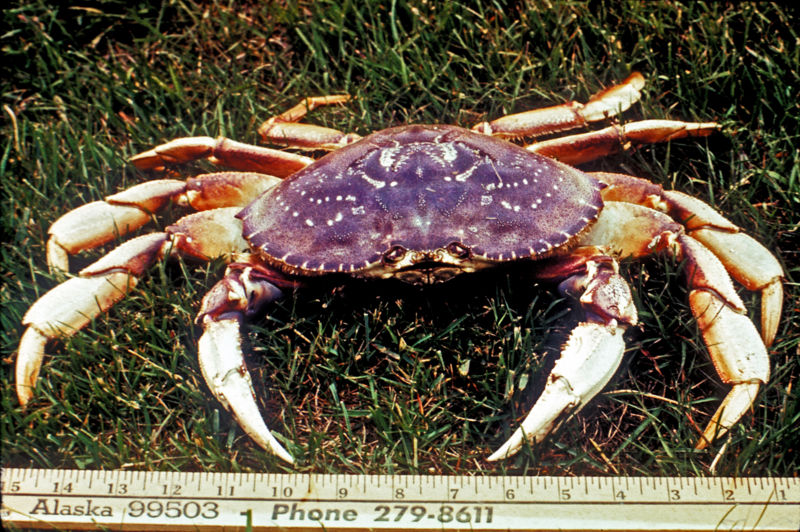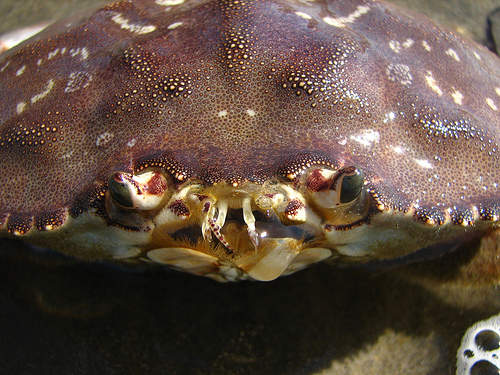Cancer magister, Dungeness crab
Adaptations
Most crustaceans have a segmented body
broken down into two areas which are the abdomen and
cephalothorax.

The Cancer magister has two pairs of
antennae. These are located at the mouth of
the organism, and these allow it to sense and react to stimuli.
The antennae also act as smelling receptors which detect
chemical stimuli and allow the crab to find food.
The crab is also covered with small bristles or hairs
that react to different chemical stimuli and water currents.
It also has compound eyes which allow for further
advance reactions to stimuli.

The Cancer magister can inhabit hypoxic areas, a hypoxic region being one with little to no oxygen. The Cancer magister can employ physiological mechanisms that allow it to survive for a period of time in hypoxic conditions. The data seems to show that the crabs prefer to feed in areas with high concentrations of oxygen and digest in areas with low concentrations of oxygen. This data leads to the conclusion that this may be a very important system which regulates their behavior and distribution throughout the environment.
Next, lets explore the Reproduction of the Dungeness crab.